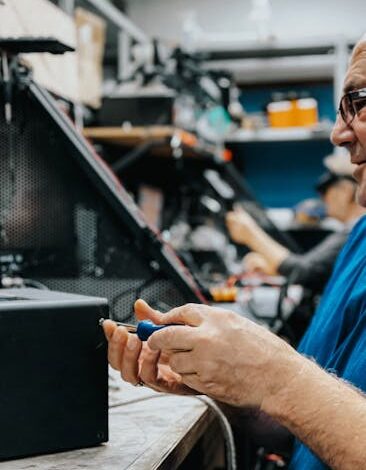Beyond Super Cruise: Understanding “Eyes-Off, Hands-Off” Driving

Picture this: you’re cruising down the highway, not a care in the world. Your hands are off the wheel, eyes are off the road, and you’re perhaps catching up on emails, enjoying a podcast, or simply taking in the scenery. This isn’t a futuristic fantasy from a sci-fi movie; it’s the reality General Motors is promising us in just a few short years. GM recently announced its ambitious plan to introduce an “eyes-off, hands-off” driving system by 2028. For many, this sounds like a monumental leap, but for those of us following the industry closely, it’s a testament to years of relentless innovation and a clear signal that the future of mobility is accelerating faster than ever before. So, what does this actually mean for you, the driver, and how is GM planning to pull off such a transformative feat?
Beyond Super Cruise: Understanding “Eyes-Off, Hands-Off” Driving
When GM talks about “eyes-off, hands-off,” they’re signaling a significant progression beyond even their highly regarded Super Cruise system. While Super Cruise allows for hands-free driving on compatible highways, it still requires the driver to remain attentive and ready to take over at a moment’s notice. The “eyes-on” requirement is a crucial distinction, often monitored by an infrared camera to ensure driver engagement.
The 2028 system aims to push past this boundary, moving into what’s generally considered Level 3 or even Level 4 autonomy in specific operational design domains. In simpler terms, this means the vehicle takes full control of the driving task under defined conditions, allowing the human driver to truly disengage from the act of driving. Imagine being able to send a text, watch a movie, or even take a nap, with the confidence that the car is handling everything. This is a game-changer, shifting the responsibility from human to machine in designated scenarios.
Of course, there will be limitations. This isn’t a “set it and forget it” system for every road and every condition. It will likely be geo-fenced to specific highways or well-mapped urban areas and will have clear protocols for when the human driver needs to resume control, such as in inclement weather or complex construction zones. The technology’s intelligence will be its ability to safely handle routine driving, recognize its own limitations, and communicate clearly when human intervention is required. This balance between automation and human oversight is crucial for safety and public acceptance.
The Silent Architects: How Cruise’s Tech Fuels GM’s Vision
You might be wondering, how exactly is GM planning to achieve this quantum leap in autonomous driving capabilities? The answer lies in a powerful, symbiotic relationship that often goes unnoticed by the casual observer: the deep integration of Cruise’s cutting-edge technology. Cruise, GM’s majority-owned autonomous vehicle company, has been at the forefront of driverless technology for years, accumulating an invaluable wealth of real-world experience.
GM explicitly stated that Cruise’s technology stack is a direct pipeline into the automaker’s next-generation driver assistance and autonomy programs. This isn’t just about sharing code; it’s about leveraging a sophisticated ecosystem of AI models and robust simulation frameworks. Think about it: Cruise’s AI models have been meticulously trained on over five million driverless miles. That’s five million miles of navigating real-world traffic, encountering unpredictable pedestrians, interpreting nuanced road signs, and handling countless “edge cases” that are impossible to fully replicate in a lab. This massive dataset is the lifeblood of advanced AI, allowing the system to learn, adapt, and predict with incredible accuracy.
From Real Roads to Digital Twins: The Power of Simulation
Beyond the physical miles, Cruise’s simulation framework plays an equally critical role. Creating a digital twin of the real world allows engineers to test and refine their algorithms in a safe, controlled environment, running billions of virtual miles to stress-test the system against every conceivable scenario. This combination of real-world data and extensive simulation is what makes the technology so robust. It’s how the system learns to react predictably to the unexpected, how it improves its perception capabilities, and how it constantly enhances its decision-making logic. By tapping into Cruise’s proven capabilities and extensive operational experience, GM isn’t starting from scratch; it’s building on a foundation forged in the crucible of real-world autonomous operations.
This strategic integration means that GM isn’t just developing a feature; it’s internalizing a proven, advanced autonomous driving platform. It accelerates their timeline, reduces development risks, and ensures that the “eyes-off, hands-off” system benefiting consumers in 2028 is backed by some of the most rigorously tested and data-rich AI in the industry. It’s a smart play, leveraging specialized expertise to achieve mainstream adoption.
Navigating the Future: Challenges and Opportunities for Mass Adoption
The promise of eyes-off, hands-off driving is certainly exciting, but bringing such a transformative technology to the masses by 2028 isn’t without its hurdles. The path to widespread adoption is paved with both significant opportunities and considerable challenges that the industry, and indeed society, must navigate.
Opportunities on the Horizon
The opportunities are profound. First and foremost, safety. Human error is a factor in over 90% of all traffic accidents. By removing human fallibility from the driving equation in specific scenarios, autonomous systems have the potential to dramatically reduce collisions, injuries, and fatalities. Imagine a world with fewer rush-hour fender-benders and more predictable traffic flow. Secondly, productivity and leisure. For millions, commuting is dead time. Freeing up that time allows individuals to work, relax, learn, or simply enjoy their journey, fundamentally changing our relationship with our cars and our daily routines.
Beyond personal convenience, autonomous vehicles offer enhanced mobility for those who currently cannot drive, such as the elderly or individuals with disabilities, granting them greater independence. This could lead to a more inclusive transportation system. Furthermore, more efficient driving, optimized by AI, could lead to better fuel economy and reduced emissions, contributing to environmental sustainability.
Overcoming the Obstacles
However, the challenges are equally formidable. Public trust and acceptance remain a significant barrier. Incidents, however rare, involving autonomous vehicles often dominate headlines, eroding confidence. GM and others will need to demonstrate impeccable safety records and clear communication to win over a skeptical public. Regulatory frameworks also need to catch up. Laws vary widely by state and country, creating a complex patchwork that can hinder national deployment. Standardized regulations for liability, operational parameters, and certification are essential.
The cost of such advanced technology will initially be high, making it a premium feature. Democratizing access will require economies of scale and further technological refinement to drive down prices. Lastly, there are ethical dilemmas and “edge cases” that autonomous systems must be programmed to handle, from deciding how to act in unavoidable accident scenarios to navigating complex social interactions on the road. These aren’t just engineering problems; they’re philosophical ones that demand careful consideration and public dialogue.
A Journey, Not Just a Destination
GM’s target of 2028 for widespread “eyes-off, hands-off” driving is an ambitious and exciting one. It signifies a future where the act of driving, for certain segments of our journeys, moves from a demanding chore to a productive or leisurely experience. This transformation isn’t happening in a vacuum; it’s the result of years of dedicated research, billions of miles of data, and the strategic integration of advanced AI capabilities forged by companies like Cruise.
While challenges in regulation, public acceptance, and cost remain, the industry is steadily working through them. The cars arriving in our driveways in the coming years will be far more than just modes of transport; they will be intelligent partners, capable of handling an increasing share of the driving responsibility. This journey towards full autonomy is a testament to human ingenuity, promising not just smarter cars, but a profound shift in how we interact with our world, making our roads safer, our commutes more productive, and our lives a little less stressed. Get ready for a future where your car truly drives itself, letting you reclaim your time behind the wheel.





